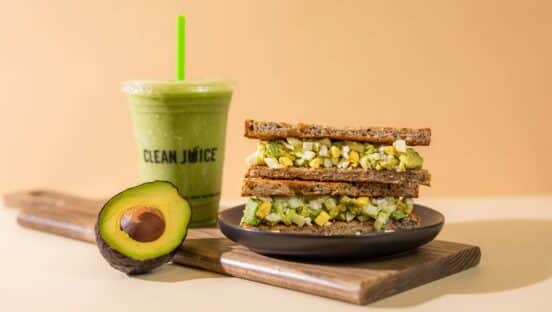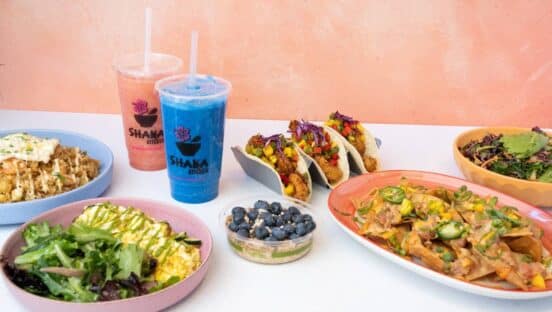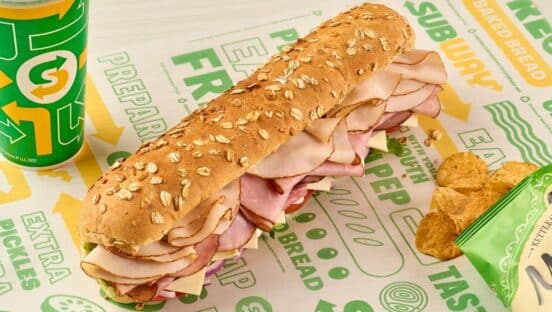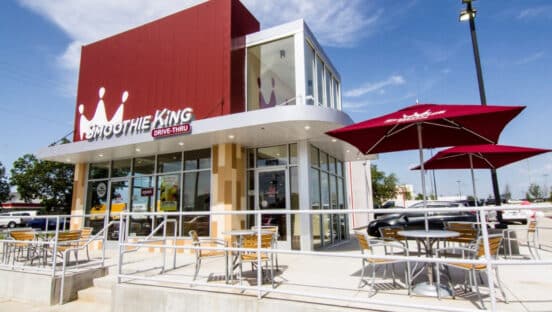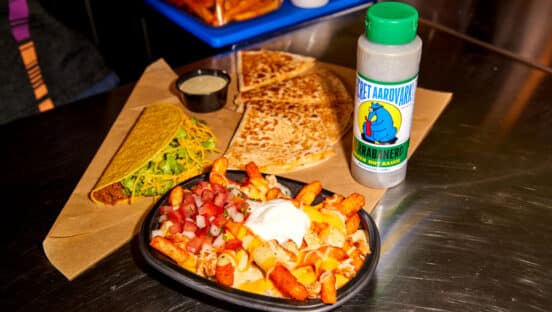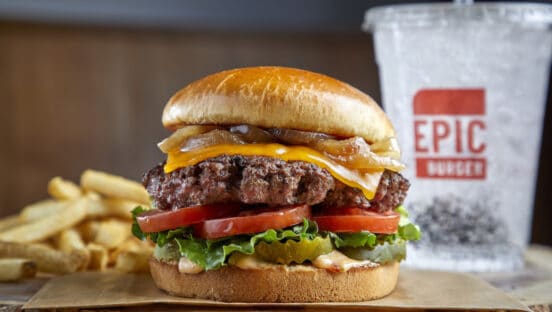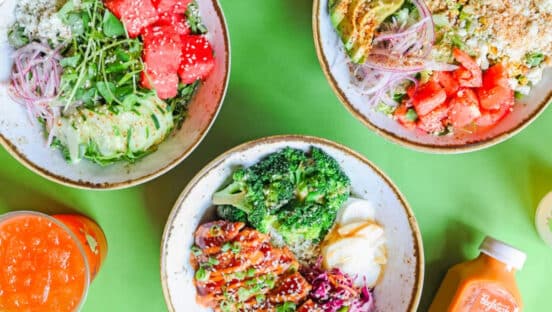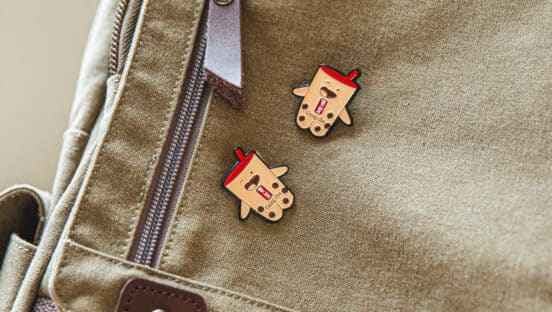Anil Yadav has spent more than three decades building his franchising empire.
His legacy, Yadav Enterprises, oversees 343 restaurants across six brands in the casual-dining and quick-service segments—Jack in the Box, Denny’s, El Pollo Loco, Corner Bakery Cafe, Sizzler, and TGI Fridays.
But Yadav, who is also a significant investor in TGI Fridays’ ownership group, has been eager to play in a different, bigger sandbox.
That turned out to be Taco Cabana, which the franchisee purchased for $85 million from Fiesta Restaurant Group last year. Not only is Yadav now a full-fledged franchisor, but he’s also the leader of a progressing turnaround effort.
The goal in the next five to 10 years is to expand outside of Texas and surpass 1,000 units. Currently, the company owns 142 stores in Texas, and one franchisee operates six units in New Mexico.
“I loved everything about the brand,” Yadav says. “I mean of course the brand is a great legacy, been around the Texas market for 35-plus years as a regional brand, but has the ability to be a national brand.”
Taco’s pandemic recovery hasn’t been as swift as others in the quick-service space. In the second quarter of 2021, same-store sales dropped 6.7 percent, including declines of 6.9 percent, 6.7 percent and 6.5 percent in April, May, and June. Even before COVID, comps decreased 4.1 percent in 2019 year-over-year.
The first step toward revitalizing the brand and developing a new franchise program was creating a self-sufficient and independent headquarters in San Antonio, according to COO Ulyses Camacho. Once that was established, the fast casual conducted research to define its brand identity, which dates back nearly 45 years.
Internally, the brand completed a SWOT analysis (strengths, weaknesses, opportunities, and threats) and pored over decades worth of archives. Externally, Taco initiated an attitude, awareness, and usage study, to gain a better understanding of where it stands in the marketplace.
The fast casual realized Tex-Mex is its foundation and should be the starting point of all key decisions.
“That has taken place in the last six months,” Camacho says. “Once we understood all the points that we described, then we started working with research and development, strategy, marketing to really start creating filters so that everything that we do, it’s true to our roots—not only to retain the existing customer, but to gain new customers, new generations.”
The re-emphasis of Tex-Mex started with menu innovation. This includes Beef Picadillo Flautas, Shrimp Tampico with pineapple chipotle salsa, white queso, and jalapeño salsa. Taco will also continue to innovate around its alcoholic beverage lineup, such as the peach margarita and a special flavor for Cinco de Mayo.
To meet demands of long-time customers, the restaurant is bringing back many original recipes and popular items, like the Salsa Fuego and Salsa Ranch, a variety of enchilada flavors, and the relaunch of burritos for breakfast, lunch, and dinner.
“The brand is going to need foundation,” Yadav says. “I mean we have unique high-quality ingredient and product that we get a lot of credit for, and I think there’s a lot of opportunity to bring back the core product that really did well from the quality. There’s a lot of research and development. We have been putting our culinary department to the highest task to come back and really bring back what Taco Cabana was known for.”





Camacho says new leadership was also an opportunity to “refresh every aspect of the brand,” without touching fundamentals or Tex-Mex culture. The plan involves recreating the website and mobile app in multiple phases, using new packaging, offering a streamlined catering menu and mobile catering kitchen, building an improved loyalty program, and broadening its presence with more retail gift card partnerships and bulk B2B gift card purchases via the new website.
Taco is also investing in a double drive-thru prototype and piloting digital menu boards to satisfy guests, understand new behaviors, and navigate challenges with the workforce.
In Q2 2021, 71 percent of Taco’s sales came through drive-thru, up from 54 percent in 2019. The remaining mix was 18 percent counter sales (dine-in and takeout), 7 percent delivery, 3 percent online, and 1 percent catering. During Q2 2020, which occurred soon after dining room restrictions were implemented nationwide, drive-thru accounted for 81 percent of sales.
Drive-thru increased visits by 4 percent in 2021 year-over-year, and held the largest share of off-premises transactions at 52 percent, according to the NPD Group. A host of chains have sought double drive-thrus (or even triple drive-thrus) in the past couple of years, including Jimmy John’s, Taco Bell, Portillo’s, Captain D’s, Panera, and others.
“Right now Taco Cabana is pretty large,” Yadav says. “They’ve got the huge patio, they’ve got the big dining. With the shifting through this pandemic, what you learned, is that necessary to have that large footprint? Drive-thru, pick-up, third-party delivery, is a huge part of the business nowadays.”
Before Taco reaches for national status, the CEO says there’s still room to grow in the Lone Star State. Soon, the brand will reopen a store in Longview, Texas, that closed prior to the pandemic, and the real estate team is on the hunt for additional sites in multiple markets, like Houston and Dallas.
The CEO believes Taco could realistically double its footprint within the state. Barring any delays or unforeseen circumstances, the brand should open eight to nine units this year.
To Yadav, transitioning to franchisor hasn’t been too difficult, considering his involvement with franchise advisory boards and a plethora of strategic decisions over the years. At the end of the day, he says, the goals are the same—four-wall execution is the key to success and growth.
“I learned everything what not to do as a franchisor,” Yadav chuckles. “What I thought that they could do better and what I thought they could improve more from the support point of view and probably the development point of view and strategically growing the brand from technology, research and development, innovations, training, and all those things.”
The hope is that a reinvigorated franchise model will trigger expansion that hasn’t been seen in years. From 2017 to 2019, Taco closed a net of one store, and in 2020, the brand shut down a net of 23 units.
Although the exact details of the upcoming program can’t be shared yet, Camacho and Yadav are confident in the process and where the fast casual is headed in the coming years.
“We are six months into the new leadership and the amount of work and the heavy lifting that it has been done, it is just the beginning,” Camacho says.


